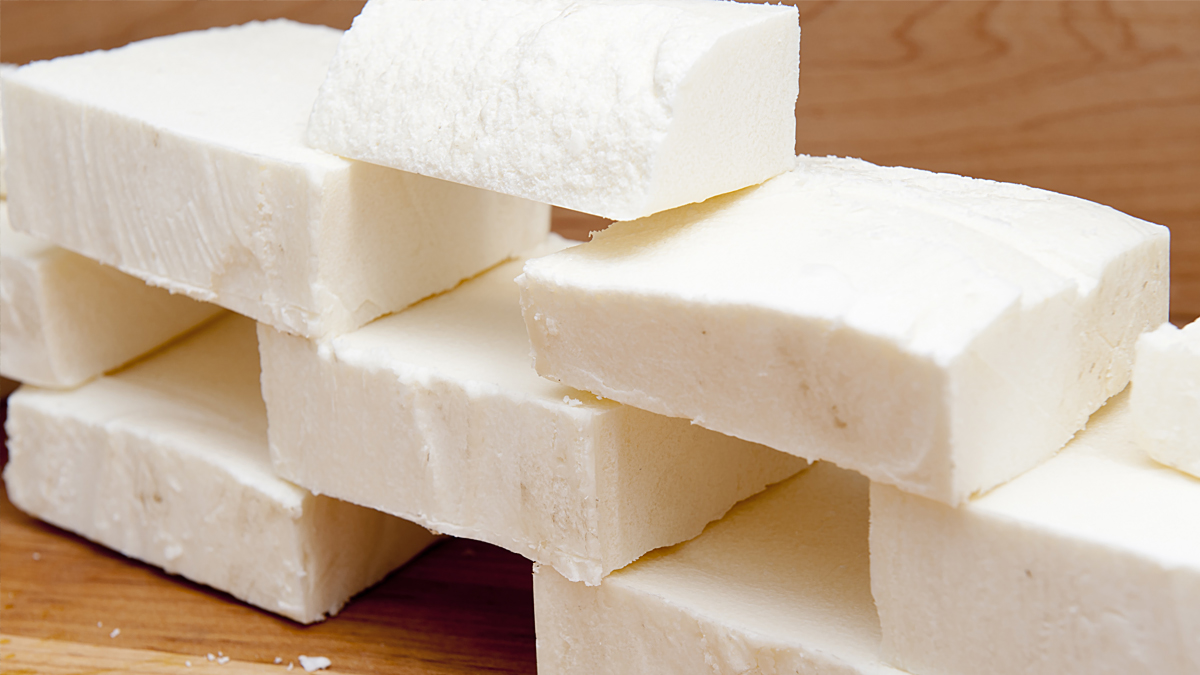Cold process soap is made without any external heat applied to it, while hot process soap is most often cooked in a crockpot to speed up the soapmaking process.
The chemical process of soap
The formula for soap: Alkali base (lye) + water + acid (your oil/fat) = soap
Sodium Hydroxide (known as lye) is your base and when combined with oil (considered the acidic part of this equation) it goes through the process of saponification. This means when you mix the two together they start a reaction that converts it into glycerin (the fatty acids combine with the hydroxide ions) and your soap.
Soap is made when your base ingredients go through the chemical process of saponification.
All soap, regardless of the kind, goes through the saponification process and has lye in it.
Many people are afraid to make soap because it involves handling lye. Lye requires caution, but you also just need to employ the same common sense you’d use for any potentially dangerous situation such as cooking on a hot stove or driving down the road in your car.
Handle the lye with proper protective gloves and eyewear along with a healthy dose of respect. Do NOT involve your children in this activity!
How to Stay Safe with Lye
- Slowly add your lye to the water. It immediately gets as hot as boiling water and never pour your water into the lye, it can cause a chemical reaction like a volcano.
- For the first few minutes lye water will let off caustic fumes. The fumes themselves can burn your airway and the lye water itself can burn your skin. Do not lean over or breath in the fumes.
- Wear proper safety gear. Be sure you’re well protected by wearing a long-sleeved shirt, pants, shoes, safety goggles, and gloves! Your hands are the closest part to the lye because you’re stirring it.
- You must have good ventilation. Mixing it outside is best, but if you’re mixing indoors make sure it’s under an exhaust fan and in an excellent ventilated area, no kids or animals running through or around!
- The fumes are done letting off after the first few minutes. I mix my lye water outside and then bring it in after a few minutes.
In addition to protective eyewear and gloves you will need an accurate digital scale is essential! Don’t measure soapmaking ingredients by volume (cups, tablespoons, etc) as it’s just not accurate enough.
Additional items to have on hand:
- Accurate thermometer – candy-making thermometer works well
- Molds – homemade or store-bought
- Immersion blender – save time and energy
How to make cold process soap safely
Subscribe for FREE to Continue Reading
Subscribe for FREE to get access to all of our premium content and get an email when new content is added.
The purpose of this blog is to present preparedness ideas for those that are brand new to the idea of being prepared for various disasters. We will also provide information for experienced ‘preppers’.

